Our country, state and region need to be prepared for an economic restart when the public health situation allows. Early and deliberate planning now, so we are prepared to unwind restrictions will help mitigate the economic devastation caused by the COVID-19 pandemic. It is imperative to create pathways for regions where the curve has flattened to responsibly reopen so we can rebuild our economy as quickly, and as safely, as possible.
The following outlines working recommendations for the Grand Rapids Chamber to approach this effort, recognizing that collaboration with public health will be critical to any successful effort, and will be used to guide our work with policymakers.
In the “Stay Home, Stay Safe, Save Lives” order (EO 2020-21), the Governor defined the elements for evaluating restrictions based on, but not limited to:
- Data on COVID-19 infections and the disease’s rate of spread;
- Whether sufficient medical personnel, hospital beds, and ventilators exist to meet anticipated medical need;
- The availability of personal protective equipment for the health-care workforce;
- The state’s capacity to test for COVID-19 cases and isolate infected people;
- Economic conditions in the state.
This provides a sense of what is needed to move past the current, extraordinary orders, and correctly puts controlling the virus at the forefront. The Governor’s office and policymakers should define these metrics to assist with data-drive decisions on amending current and future orders.
Once conditions warrant a change in economic restrictions based on these metrics, the question moves to how to do it. This effort must be transparent to build trust in the general public and among both employers and employees. Broad understanding of the risk profiles and the effectiveness of risk mitigation measures is critical for employees and citizens to feel safe. Therefore, we must rely on known standards, trusted and credible experts, and seek consensus.
Until a vaccine is developed, a restart of the economy will require public health systems that are strong enough to detect and respond to cases, as cited above. Leaders must recognize that regions may differ in their readiness to restart.
There are several relevant factors, but policymakers should rely on activity- and geographic-based risk profiles. A helpful way to think about it is this graph provided by McKinsey and Co. (Cadena, April 2020):

A matrix of this sort should be coupled with an analysis of sectors and industries that can safely reopen based up their unique risk profile. This will require additional levels of scrutiny and detail, but will serve to minimize job loss where the risk of transmission is low. Adopting uniform guidelines based on each stage, coupled with appropriate safety protocols (McKinsey examples below), will be important to reduce confusion and promote better coordination.
As workplaces reopen, leaders should review and implement physical distancing measures based on guidance from the CDC and other entities. OSHA has also already built a framework for working safely that could be applied across a wide variety of industries. These safety standards and practices are fairly well established. This framework can be found in a document called “Guidance on Preparing Workplaces for COVID-19” and can be viewed here.
The state should also consider higher level of restrictions for those population sectors most vulnerable and at risk. Orders should vary depending on an individual risk profile, which can be classified according to public health experts. Importantly, a framework for safe transitions help provide more certainty. It will offer citizens and businesses an idea of what to expect, which can lead to better decision making by individuals and businesses for a smoother transition.
To summarize, the Grand Rapids Chamber supports:
- Better define the metrics for relaxing restrictions based upon the “Stay Home” executive order.
- Create a framework based upon geographic and activity risk, as well as individual vulnerability.
- Assess both the risk of transmission and the relative economic importance of each sector to minimize the economic damage.
- Adopt uniform, preferably federal guidelines for working safely.
- Develop a matrix to allow for regions of the state where the curve has flattened to reopen based on data.
- Provide adequate time for business to prepare
- Create broad understanding of the risk profiles and the effectiveness of risk mitigation measures based upon credible sources for employees and citizens to feel safe.
Next Steps/Guidance
The first order of business is stopping the virus. The measures put in place to do so are, and will, cause colossal economic damage. We applaud efforts that both seek to contain the virus and safely reduce the negative economic impact on our communities. Focused work on both these fronts will make for a better economic recovery.
Our call to action is to be focused and nuanced based on individual communities, sectors and needs so we can rebuild our economy everywhere as quickly as we can.
The Chamber will work with a variety of stakeholders to advance these recommendations.
Phased Approach to Businesses Opening – Based upon Prosperity Regions
Phase 1 – Stay at Home Order (where we are today)
Conditions
- Cases and deaths are rising and on track to exceed health care system capacity.
Business Activity
- All businesses to the extent they are included in the most recent version of the federal CISA Guidelines on Essential Critical Infrastructure or as otherwise employing critical infrastructure workers under EO 2020-42 with safety protocols.
- Low risk business that meet safety protocols
Citizen Activity
- Mobility limited to essential local travel.
- Homemade or surgical masks worn in public settings.
Phase 2
Conditions
- Cases and deaths fall for 5 out of 7 days and the health care systems in below 75% capacity.
Business Activity
- All business activity in Phase 1.
- Medium risk, non-essential businesses can operate that are:
- Closed to the public, where employees comply with safety protocols such as non-essential manufacturing and greenhouses, or
- Open to the public with extreme social distancing such as golf courses.
Citizen Activity
- Individuals with symptoms of or exposure to COVID-19 must self-isolate for 14 days.
- Vulnerable individuals (based on age and health) continue to stay home.
- Gatherings are still not allowed.
- Limited local mobility, no inter-regional mobility.
- Homemade or surgical masks worn in public settings.
- Adequate testing available, both for COVID-19 and antibody
Phase 3
Conditions
- Cases and deaths fall for 17 out of 21 days or 14 out of 21 and the health care systems in below 50% capacity.
- Adequate testing is available, both for COVID-19 and antibody.
Business Activity
- All business activity in Phase 2.
- Medium risk businesses with this profile can operate that are:
- Open to the public with social distancing.
- Bars and restaurants limited to 50% capacity with groups seated 6’ from each other.
- Gatherings less than 100 are allowed.
Citizen Activity
- Individuals with symptoms of or exposure to COVID-19 must self-isolate for 14 days.
- Vulnerable individuals (based on age and health) continue to follow Stay at Home Order.
- Some restrictions to local mobility, no interregional mobility.
- Homemade or surgical masks worn in public settings.
Phase 4
Conditions
- Cases and deaths fall for 19 out of 21 days and the health care systems in below 33% capacity.
- Adequate testing available, both for COVID-19 and antibody.
- Sophisticated and well-staffed tracing for outbreaks.
Business Activity
- All business activity in Phase 3.
- High risk businesses can operate that are:
- Open to the public with medium-sized crowds.
- Bars and restaurants at full seating.
- Gatherings less than 250 are allowed.
- Open to the public with medium-sized crowds.
Citizen activity
- Individuals with symptoms of or exposure to COVID-19 must self-isolate for 14 days.
- No unique restrictions for vulnerable individuals (based on age and health).
- Mask requirements and social distancing limitations removed.
- No local mobility restrictions, advice interregional mobility.
- Homemade or surgical masks worn in public settings.
Phase 5
Conditions
- No active spread for 30 days or a vaccine has been available for 30 days.
Business Operating
- No restrictions on business activity.
- All remaining restrictions are removed and extreme risk, non-essential businesses can operate that are:
- Open to the public
- Festivals, concerts, sporting events
- Open to the public
Citizen activity
- Individuals with symptoms of or exposure to COVID-19 must self-isolate for 14 days.
- All other remaining restrictions removed.







